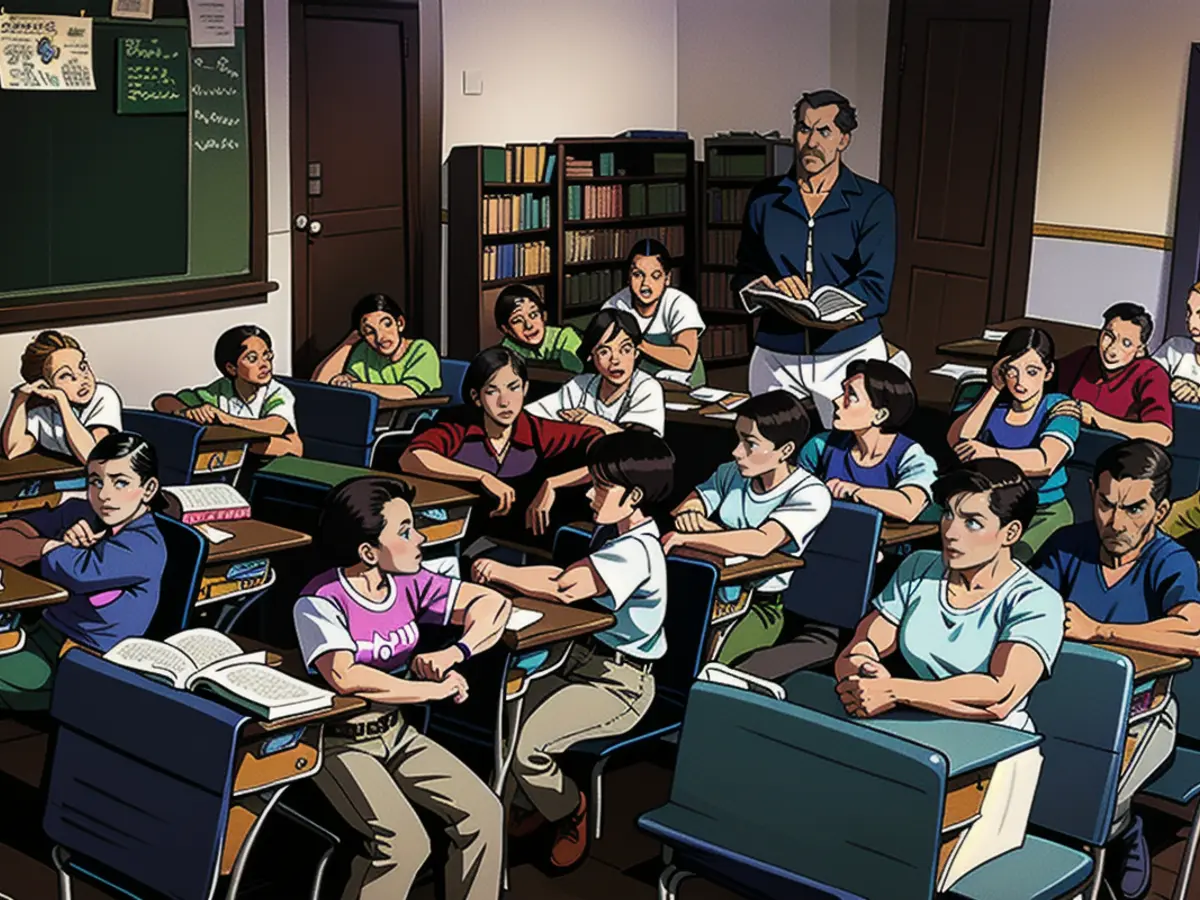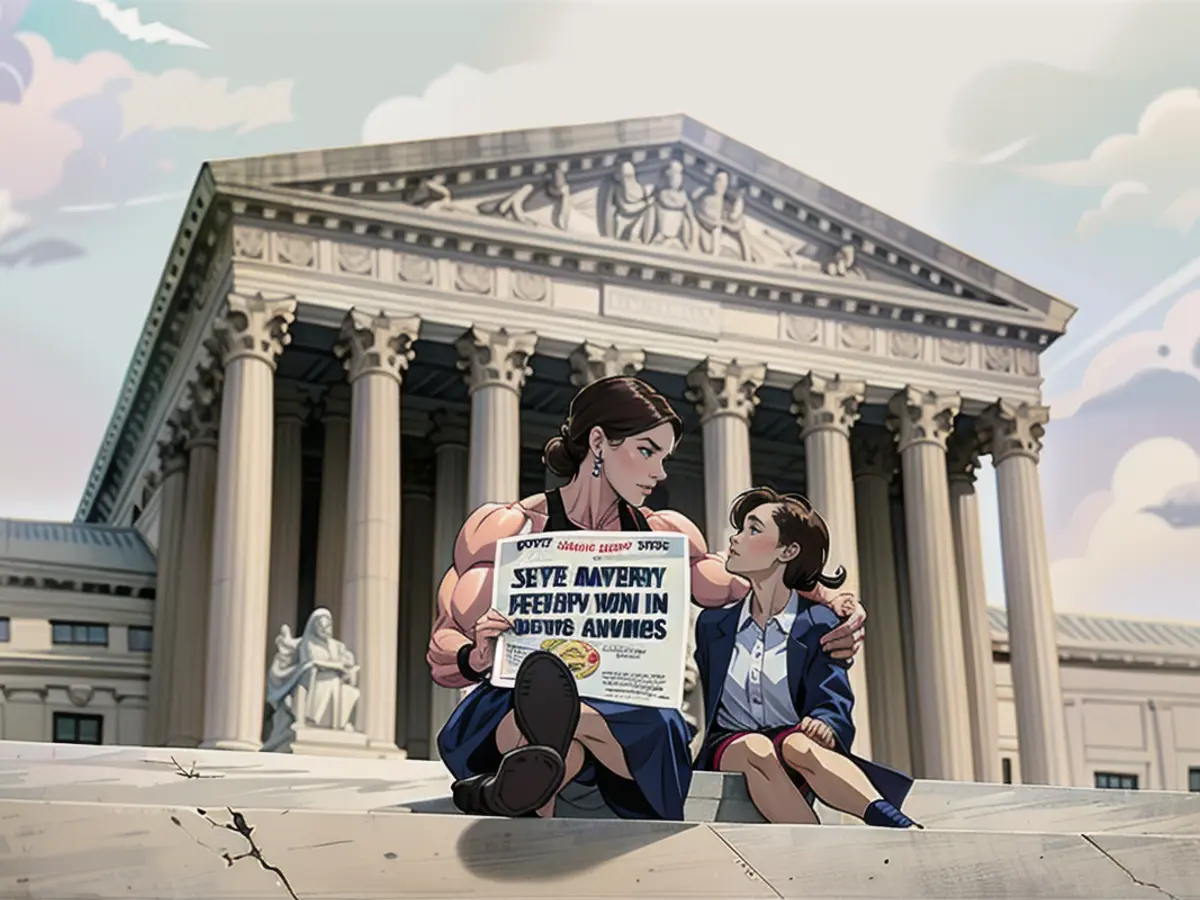Civil liberties organizations allege that conservatives are reinterpreting the historic Brown v. Board decision on its 70th anniversary.
The 1954 Supreme Court ruling in Brown v. Board of Education is a pivotal moment in American history, as it demanded the integration of public schools, a historic win for the civil rights movement. This momentous decision was celebrated 70 years ago.
Conservative Justice Brett Kavanaugh, speaking in Texas recently, described the landmark case as one of many that formed the "fabric of America." However, the significance of the decision is being challenged in a series of lawsuits aimed at dismantling initiatives designed to foster classroom diversity.
In these cases, conservative groups argue that Brown requires schools and government programs to avoid considering race at all. They maintain that the 14th Amendment, which ensures equal rights to all Americans, has not been given an appropriate interpretation to maintain a multiracial democracy.
In contrast, civil rights organizations assert that the Brown decision is being weaponized against those intended to benefit from it. The head of the NAACP Legal Defense Fund, Janai Nelson, stated to CNN: "Brown is being weaponized against the very people it was intended to directly serve. And that is largely a result of the Supreme Court never giving the 14th Amendment the full and robust interpretation that is required to sustain a multiracial democracy."
Despite Brown's significant impact, many schools in the US remain deeply segregated.
Renowned affirmative action and antidiscrimination law expert Jonathan Feingold from Boston University observed, "Not only has Brown failed to deliver on its promise, right-wing groups have co-opted Brown and turned it into a sword to discredit efforts to integrate our schools. As a country, we seem to have accepted a status quo in which Black and brown students, and many Asian American students, do not receive equal educational opportunities."
Conservative Groups Push for a 'Colorblind' Interpretation
The current Supreme Court reignited the debate over the Brown decision last year with its decision ending affirmative action in college admissions at Harvard and the University of North Carolina. The interpretation of Brown was fiercely debated in this case, and the Supreme Court's conservative majority stated that the precedent mandated all but eliminating the consideration of race.
According to Chief Justice John Roberts, writing for the 6-3 majority in the UNC opinion, "The conclusion reached by the Brown Court was thus unmistakably clear: the right to a public education 'must be made available to all on equal terms,'...The time for making distinctions based on race had passed."
The court's liberal wing, led by Justice Sonia Sotomayor, disagreed with this reading. "In Brown v. Board of Education, the court recognized the constitutional necessity of racially integrated schools in light of the harm inflicted by segregation," Sotomayor wrote in a scathing dissent. "Today, this court stands in the way and rolls back decades of precedent and momentous progress."
Although the fight over race-conscious admissions was settled, the court's decision in the Harvard case and the debate over color-blind versus race-conscious policies have resurfaced in other legal battles, including challenges to workplace diversity programs and recent disputes over redistricting. Schools also face battles in court over policies that promote student diversity without relying on race directly.
Students for Fair Admissions, the group behind the successful lawsuit against Harvard and UNC, is now challenging the University of Texas at Austin for its policy of collecting racial data from applicants. In a filing earlier this year, the organization claimed that the Supreme Court's decision last year on college admissions "built on Brown's legacy" and required courts to view the Constitution as requiring a "color-blind" approach.
"Brown v. Board was perhaps the most consequential Supreme Court opinion in the last one-hundred years," the group's president, Edward Blum, told CNN in a statement. "For a significant majority of Americans of all races, this case established the doctrine of ‘colorblind’ public policies to which all levels of government must adhere."
The university affirmed that it doesn't use the racial data to make decisions about applicants.
The Pacific Legal Foundation has also challenged a proposal by an elite Virginia high school to accept a predetermined number of students from each middle school. The parents represented by the group sued the Fairfax County, Virginia, school board in 2021, arguing that its policy violated the Constitution by aiming to balance the student body's racial makeup to the detriment of Asian Americans.
A federal appeals court in Richmond ruled against the parents. The Supreme Court declined to hear that case in February.

However, more cases are on the horizon. The group has an appeal pending at the Supreme Court, challenging admissions practices at three selective public schools in Boston, asserting that the justices have "struggled with cases involving racial discrimination in education" for over a century. This appeal cites Brown v. Board in a footnote.
Research Shows Rising Segregation in Major School Districts
A senior attorney at the Pacific Legal Foundation, Anastasia Boden, contends that fulfilling Brown's promise involves ending discrimination in all forms, including modern forms like "racial balancing," which leads to excluding certain students, often Asian students, based on their race.
Nonetheless, civil rights groups contend that this interpretation misinterprets the history and purpose of the seminal decision.
In 2022, David Hinojosa, a lawyer with the Lawyers’ Committee for Civil Rights Under Law, testified before the Supreme Court about affirmative action in the UNC case. Hinojosa, who represented student and alumni, claimed that Brown v. Board was not about ignoring the caste system, but rather dismantling it.
"I never imagined the Supreme Court would go so far," Hinojosa lamented, referring to the college admissions case. "To suggest that Brown v. Board supports the exclusion of highly qualified brown and Black students... is a disgrace."
Brown v. Board was a significant moment in history, according to both sides - a triumph for civil rights. However, the implementation of Brown took many years, numerous appeals, and even military intervention by President Dwight Eisenhower to get the process started.
During the confirmation hearings for Brett Kavanaugh and Amy Coney Barrett, senators questioned the nominees about Brown v. Board's status as settled law. This was to emphasize the differences between how former President Trump's nominees perceived Brown compared to Roe v. Wade, which established the right to abortion in America and was overturned by the court in 2022.
Kavanaugh, during his 2018 hearings, often stated that Brown was the "greatest moment in Supreme Court history." Barrett, meanwhile, had said earlier that Brown "was correct as an original matter."
However, the Brown decision also served as a reminder of the court's limitations. While schools are no longer legally segregated, they have never been fully integrated. In the 100 largest districts in the U.S., racial segregation has increased by 64% since 1988. This shift is attributable to schools being released from court-ordered desegregation plans and the rise of school choice programs.
Advocates like Hinojosa maintain that these statistics reveal the very thing Brown was trying to prevent.
Today, Hinojosa laments that the decision is being exploited by "anti-civil rights groups to further segregate schools."
References
- Stanford University and the University of Southern California. (2022). Racial segregation has increased 64% since 1988 in the nation’s 100 largest school districts.

Read also:
- Year of climate records: extreme is the new normal
- Precautionary arrests show Islamist terror threat
- UN vote urges Israel to ceasefire
- SPD rules out budget resolution before the end of the year
Source: edition.cnn.com






